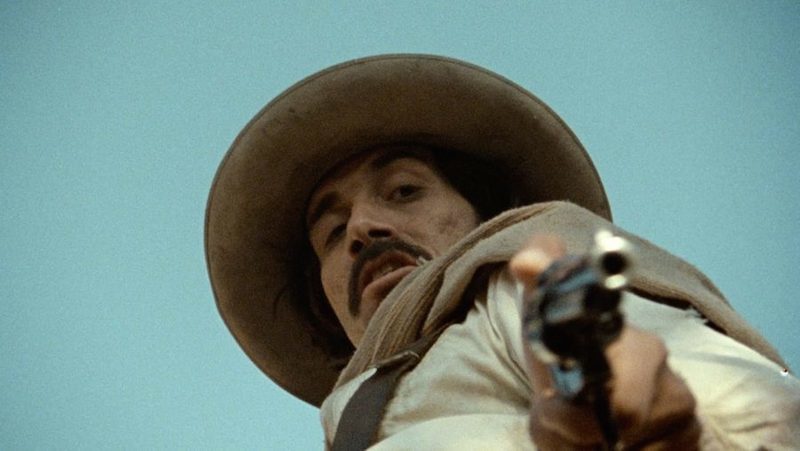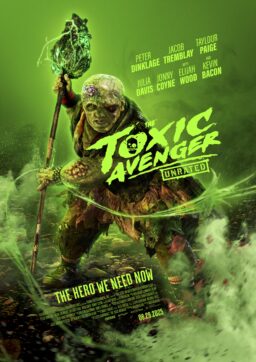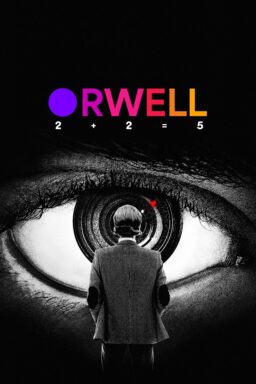Thumbnails is a roundup of brief excerpts to introduce you to articles from other websites that we found interesting and exciting. We provide links to the original sources for you to read in their entirety.—Chaz Ebert
1.
“Miranda Harcourt on ‘The Changeover’ and Whānau Values in New Zealand“: At Indie Outlook, I interview the acclaimed actress and acting coach about her terrific new feature that she directed with her husband, Stuart McKenzie. We also discuss her ingenious coaching techniques, clients such as Melanie Lynskey and Nicole Kidman, and her daughter, “Leave No Trace” star Thomasin Harcourt McKenzie.
“I was coaching a few actors via Skype for the role that Thomasin ended up playing in ‘Consent,’ and she was reading a book while listening to our session. After I hung up, Thomasin said in her little voice, ‘I’d like to audition for that role,’ and I went, ‘What? But you hate acting.’ She replied, ‘No, it sounds like a really great story to tell,’ so we did a little read-through of the script right here, exactly where I am sitting right now. I was like, ‘Oh my god, you are amazing.’ It was a great performance, and when she went in for the audition, she got the role. The film was directed by Robert Sarkies, who also made another great New Zealand movie, ‘Out of the Blue.’ Even now, I don’t think Thomasin has seen all of ‘Consent,’ because she wasn’t even allowed to see the bits that she was in. She’s only in the first 17 minutes, but it’s a very intense journey. It took a lot of courage for her to portray a girl who is raped. Francis Biggs, one of my students I taught at Toi Whakaari: New Zealand Drama School, portrayed the rapist with whom Thomasin had to play that scene in ‘Consent.’ We’re both really grateful to Francis because he and Thomasin did ‘hug to connect’ before they played that scene. It enabled Francis and Thomasin to play quite an intense rape scene together so that they are in the flow of telling that story together. They weren’t in opposition, which would’ve been very psychologically damaging, not only to Thomasin, who was 13 at the time, but also to poor old Francis, because it was not a happy job for him. I’ve got a collection of great photographs chronicling the interactions that Thomasin and Francis had in order to build that relationship over a couple of weeks while preparing for the scene. Over the couple of weeks after they did that scene, Thomasin would consistently check in with him and say, ‘Hey Francis! I’m really proud of the work we did together, and I hope you feel good about it too. Just remember—it’s only acting!’”
2.

“Call it a Comeback: The Inside Story of Elvis Presley’s Iconic 1968 Special“: As remembered by our contributor Donald Liebenson at Vanity Fair.
“Elvis looms large in the singer’s legend. The live-wire special is featured prominently in two 2018 documentaries, Eugene Jarecki’s ‘The King’ (now in theaters) and Thom Zimny’s ‘The Searcher’ (on HBO). It capped a decade in which Elvis could mostly be seen only in the movies, and, increasingly, not very good movies at that. Taped in June and broadcast on December 3, 1968, it was his first television appearance since 1960, when he guest-starred on ‘Frank Sinatra’s Welcome Home Party for Elvis.’ At the time, he hadn’t performed in front of a live audience in seven years. But Presley and Binder’s creative team delivered. [Steve] Binder, a self-professed ‘West Coast guy into surf music,’ finished the special feeling in awe of Presley. ‘For me, the ‘68 special is seeing a man re-discover himself,’ Binder said. ‘I saw it on his face and in his body language as we progressed.’ Susan Doll, author of Elvis for Dummies, agreed. ‘I think it’s the peak of his career,’ she said. Col. Tom Parker, Presley’s infamously controlling manager, had promised NBC a one-hour special if the network financed Presley’s next film—‘Change of Habit,’ Presley’s screen swan song, released in 1969. He never told Presley about the deal, with good reason: ‘Elvis didn’t want to do television,’ Binder said. ‘He felt he had been burned by it.’ Even Steve Allen, the talk-show host hip enough to give Lenny Bruce a shot on prime time, forced cheese on Presley, putting him in a tuxedo to sing ‘Hound Dog’ to an actual hound dog.”
3.

“‘It Was No Gang, It Was One Guy, And He Wasn’t Really a Killer’: Producer and Star Edward James Olmos on ‘The Ballad of Gregorio Cortez“: In conversation with Jim Hemphill of Filmmaker Magazine.
“When Bob [Young] agreed to do the picture and rewrite the screenplay from scratch, he and I went to the real locations where it all happened. We went to Gonzales, Texas, where they captured and imprisoned Gregorio Cortez, and we found the exact prison. We found his cell. The jail and the courthouse were exactly how they were in 1901, it gave us an authenticity unlike anything I had ever experienced before in film. We had to talk the district court judge in Gonzales into letting us use the courthouse, and when he asked us what kind of movie we were doing, Bob kept speaking in general terms of how important our subject was to Mexican-American people and to the Latino culture, but he wouldn’t say the name because at that time no one knew who Gregorio Cortez was. The judge kept asking, ‘What’s his name?’ and finally Bob says, ‘His name is Gregorio Cortez, but he’s a really important—‘ and this guy says, ‘Stop, stop. I’ve been waiting for you guys for 35 years.’ He opens his filing cabinets, and in these cabinets is every single piece of testimony and every single newspaper article from around the country related to the trial. This judge was the foremost authority on the case in the world, bar none. He felt it was one of the most important cases in U.S. history because it was the first time a Latino had been tried in an American court of law, and with an interpreter, which was unheard of in 1901. This guy had filing cabinets filled with material, because the case was followed all over the country – it involved something like 600 Texas Rangers in hot pursuit of what they thought was a Mexican gang of killers. And it was no gang, it was one guy, and he wasn’t really a killer – it was self-defense. Anyway, discovering all that material was just unbelievable. It was magical. And it allowed us to make what the United States Historical Society claimed to be the most authentic Western ever made in American film, ever.”
4.

“John McCain, War Hero, Senator, Presidential Contender, Dies at 81“: Robert D. McFadden of The New York Times reflects on the honorable legacy of the late politician.
“In a 2018 memoir, ‘The Restless Wave: Good Times, Just Causes, Great Fights and Other Appreciations,’ he defended Ms. Palin’s campaign performance, but expressed regret that he had not instead chosen Senator Joseph I. Lieberman, a Democrat-turned-independent. At some McCain rallies, vitriolic crowds disparaged black people and Muslims, and when a woman said she did not trust Mr. Obama because ‘he’s an Arab,’ Mr. McCain, in one of the most lauded moments of his campaign, replied: ‘No, ma’am. He’s a decent family man, a citizen that I just happen to have disagreements with on fundamental issues.’ Analysts later said that Mr. Obama had engineered a nearly perfect campaign. And Mr. McCain confronted a hostile political environment for Republicans, who were dragged down by President George W. Bush’s dismal approval ratings amid the economic crisis and an unpopular war in Iraq. On Election Day, Mr. McCain lost most of the battleground states and some that were traditionally Republican. Mr. Obama won with 53 percent of the popular vote to Mr. McCain’s 46 percent, and 365 Electoral College votes to Mr. McCain’s 173. ‘Few of us have been tested the way John once was, or required to show the kind of courage that he did,’ Mr. Obama said Saturday. ‘But all of us can aspire to the courage to put the greater good above our own. At John’s best, he showed us what that means.’”
5.

“Inside Patricia Clarkson’s brutal ‘Sharp Objects’ performance: ‘It’s dark and nasty and twisted and beautiful’“: The actress chats with The Washington Post‘s Jessica M. Goldstein about her role in HBO’s excellent miniseries.
“In Wind Gap, poison is poured down the throats of unsuspecting children. Baby teeth are pried from little girls’ gums, and skin is sliced until it scars. Yet the most transgressive act of violence in town is the low, almost-whispered delivery of four small words. Over a drink, by candlelight, a mother tells her daughter: ‘I never loved you.’ There’s no shortage of cruelty in ‘Sharp Objects,’ the eight-part HBO miniseries based on Gillian Flynn’s 2006 debut novel, whose women pass trauma from generation to generation like a haunted heirloom. But no one cuts quite like Adora, played by Patricia Clarkson. She’s a matriarch […] who coolly tells her wayward eldest daughter, Camille (Amy Adams), that she feels nothing for her, save for disappointment and disgust. Clarkson, the 58-year-old New Orleanian actress who sees glimmers of her own grandmother in the best parts of Adora, knows these scenes appear brutal. ‘But I think why they have the impact they do is that I don’t think Adora ever thinks of them as brutal,’ she said by phone from her apartment in New York. ‘I think that was what was essential. When I tell her I never loved her, I think it’s just Adora feeling connected to her for a moment to be as honest as she can be. … Sometimes she was just openly cruel. But other times, I think, when she speaks, she’s actually revealing the truth.’ ‘This is the most violent line in the series,’ said director Jean-Marc Vallée. ‘It’s not something you say to your child. … You just destroyed her! And she’s not realizing that. Or maybe she does, and she’s that cruel, that evil. But we’re not sure. And that’s what’s great about the character: that you try to understand, and you’re not sure.’”
Image of the Day

Robert Redford and Jane Fonda starred in “Barefoot in the Park,” the 1967 screen adaptation of the 1963 play, one of four works by the late Neil Simon selected by Vox‘s Aja Romano to illustrate why he was one of America’s greatest playwrights.
Video of the Day
Stella McCartney’s profile of David Lynch is a stirring ode to the role intuition plays in one’s creative process. Look for cameos by “Moonlight“‘s Ashton Sanders and “American Honey“‘s Sasha Lane.












